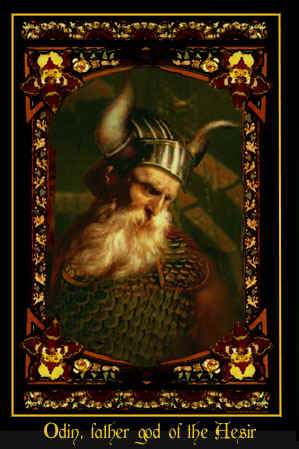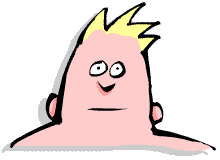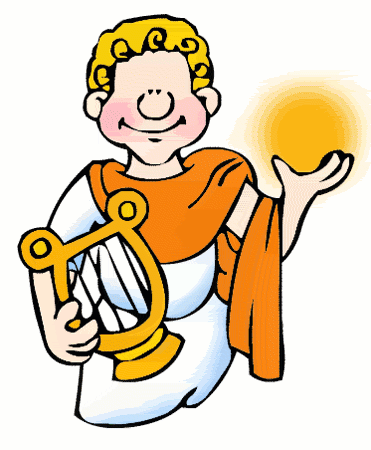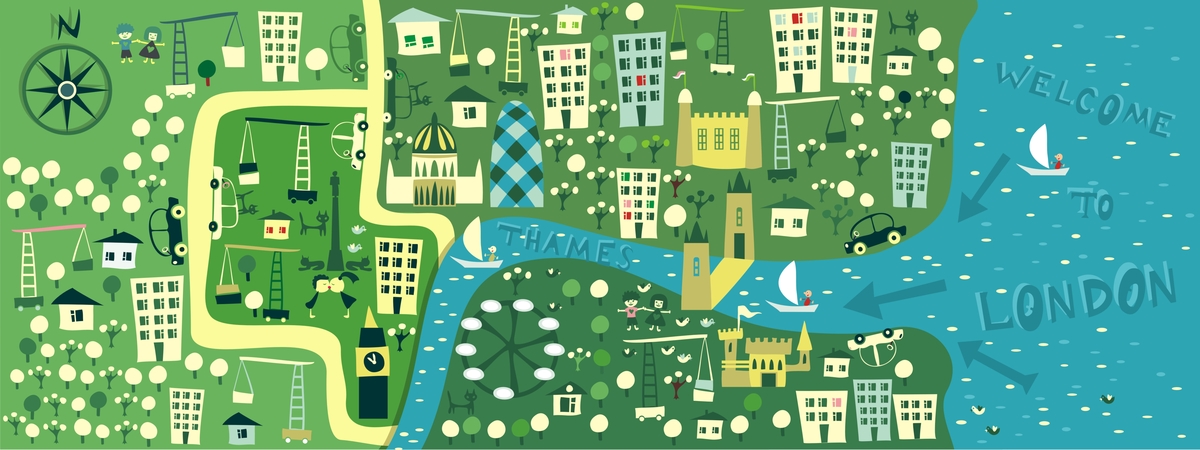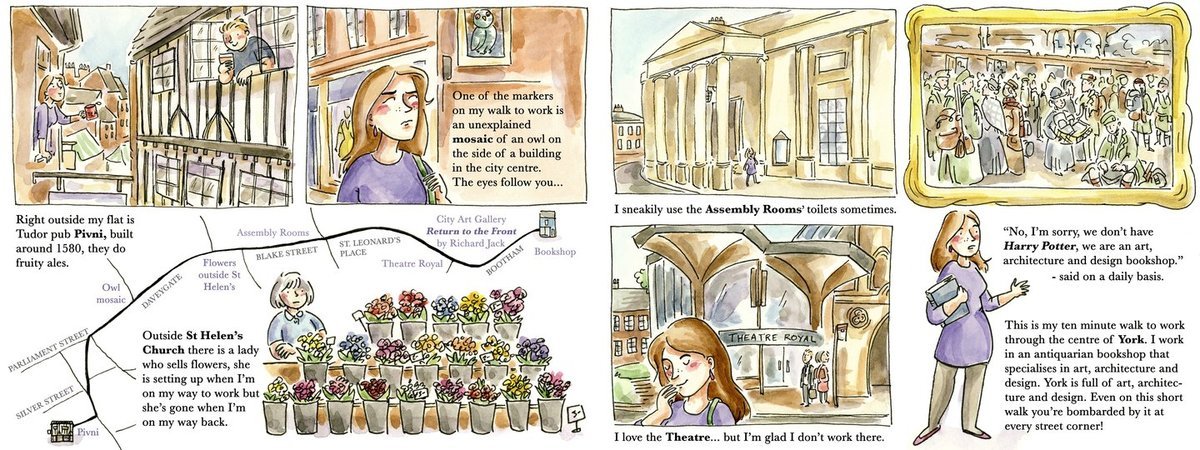Πέμπτη 28 Φεβρουαρίου 2013
CBBC Newsround - Home
READ THE LATEST BBC NEWS :CBBC Newsround - Home
Pope Benedict is the first pope for almost 600 years to resign from the post.
He's leaving because he says he's no longer well enough to carry on.
The man who'll replace him as the leader of more than 1 billion Catholics will be chosen before Easter.

Pope Benedict leaves Vatican for last time
Pope Benedict XVI has left the Vatican for the last time, before officially stepping down from the role on Thursday evening.
He was flown on a helicopter to a new home just outside Rome.Pope Benedict is the first pope for almost 600 years to resign from the post.
He's leaving because he says he's no longer well enough to carry on.

British Museum - Play
British Museum - Play
Test your skills, knowledge (and bravery!) in Time explorer - the new adventure game from the British Museum.
Test your skills, knowledge (and bravery!) in Time explorer - the new adventure game from the British Museum.

THINK TEEN 1 British Museum, London
Established in 1753 with the donation of 71,000 objects from the collection of Sir Hans Sloane, the British Museum quickly became one of the city's top attractions.
READ MORE HERE:British Museum, London
The Museum Building
Since 1754, the museum's home has sat at the site of the Montague House in Bloomsbury. It wasn't long before this facility became too small to display and store the museum's large collection and plans were made for additions to the museum. The Townley Gallery for classical sculpture was added first, but was later torn down to make way for the Smirke Building, which is the core of the building visitors see today when they visit the museum.
The Smirke Building
The idea for the Smirke Building, designed by Sir Robert Smirke in Greek revival style, was conceived in 1823 but the addition was not completed until nearly 30 years later.
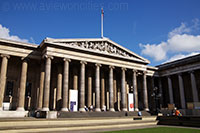
It was originally built to house the personal library of King George III. This new building was a quadrangle situated north of the Montague House. The south wing of the Smirke Building eventually replaced the old house.

Smirke Building
A domed, circular reading room was added in 1857, and the White Wing, designed by architect John Taylor, was added 30 years later. King Edward VII's Galleries, a Beaux Arts style addition, became part of the British Museum in 1914.
Parthenon Galleries
The Parthenon Galleries, by American John Russell Pope, was built to house the Parthenon sculptures and opened in 1939. However, because of extensive damage suffered during World War II, the
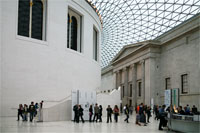
structure had to be rebuilt and was reopened in 1962. Another new wing, opened in 1980, housed public facilities like a restaurant and gift shop.

Great Court
The Great Court
Finally, the Queen Elizabeth II Great Court opened in 2000. This two-acre square (8000 sq m), enclosed by a glass roof, creates an indoor courtyard with the museum's famed circular reading room in the center. This design made by Norman Foster and Partners makes it easier for visitors to find their way in the museum thanks to the large open space, very similar to the way the
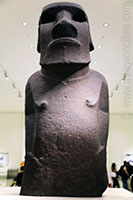
entrance area below the Louvre Pyramid in Paris works.

Easter Island Sculpture
The Museum's Collection
The collection found at the British Museum is enjoyed by millions each year. Because the museum is so large, many visitors take more than one day to explore. Not all of the more than 7 million artifacts are on display, but much of the collection constantly rotates so you'll see something new with each visit.
Elgin Marbles
The Elgin Marbles, the collection of marble sculptures that were taken from the Parthenon in Athens, is one of the museum's most famous attractions. They are located in the purpose-built Parthenon Galleries.

The sculptures, also known as the Parthenon Marbles, were obtained by Thomas Bruce, the 7th Earl of Elgin and diplomat in Constantinopal in the Ottoman Empire, which at that time included Greece.
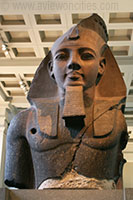 Bust of Ramesses II
Bust of Ramesses II 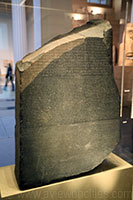 Rosetta Stone
Rosetta Stone
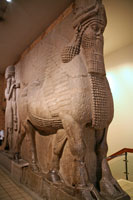
Earl Elgin obtained permission "to take away any pieces of stone with old inscriptions or figures thereon", to prevent any more damage by the Turkish.
Lord Elgin's collection was at first displayed at his own house, but in 1816 the House of Commons decided to purchase the collection and hand it over to the British Museum.

Elgin Marbles
 Bust of Ramesses II
Bust of Ramesses II  Rosetta Stone
Rosetta Stone
Assyrian winged bull
Lord Elgin's collection was at first displayed at his own house, but in 1816 the House of Commons decided to purchase the collection and hand it over to the British Museum.
Egyptian Collection
Another highlight of the British Museum is the extensive Egyptian collection. Besides many sarcophagi and statues, including an enormous one of Pharaoh Ramesses II, the collection is home to the famous Rosetta stone, used by Jean-François Champollion to decipher the hieroglyphic writing.
The text on the stone, created in 196 BC after the end of the Egyptian dynasties, is written in three different writings: Greek, hieroglyphic and demotic (a symplified form of hieroglyphic).
The British Museum is also known for its very large and popular collection of Egyptian mummies and coffins. You can even find animal mummies here.
The text on the stone, created in 196 BC after the end of the Egyptian dynasties, is written in three different writings: Greek, hieroglyphic and demotic (a symplified form of hieroglyphic).
The British Museum is also known for its very large and popular collection of Egyptian mummies and coffins. You can even find animal mummies here.
READ MORE HERE:British Museum, London
THINK TEEN 1 British Museum London: Video and Audio Tour
ANOTHER VIDEO SHOWING MORE ABOUT THE TREASURES OF THE BRITISH MUSEUM
Τετάρτη 27 Φεβρουαρίου 2013
think teen 3 myths : chinese mytholology
Ancient China
Mythology
The Three Sovereigns and the Five Emperors
Chinese mythology tells us about the first legendary rulers of Ancient China. These wise men and demigods ruled long before the first Chinese dynasty.
The Three Sovereigns were powerful demigods who lived to be very old and brought peace and prosperity to the land during their rule.
- Fu Xi - Fu Xi was said to have invented fishing, trapping, and writing. His sister was Nuwa. It was Fu Xi and Nuwa who crafted the first humans out of clay.
- Nuwa - Nuwa was the sister of Fu Xi. She helped him to create humans and also repaired the wall of heaven.
- Shennong - Shennong's name means "Divine Farmer". He brought the knowledge of agriculture to the Chinese people. He invented the plow, axe, hoe, irrigation, and the Chinese calendar.
The Five Emperors were perfect kings who ruled wisely and with honor. The most famous of the Five Emperors was the Yellow Emperor. He ruled for 100 years and brought about the start of the Chinese civilization. In addition to the Yellow Emperor were Zhuanzu, Emperor Ku, Emperor Yao, and Shun.
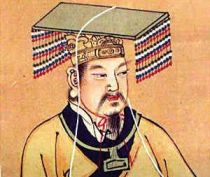
The Yellow Emperor
Chinese Dragon
The greatest creature in Chinese mythology is the legendary dragon. The dragon is a long snake-like creature with four legs each with long and dangerous claws. Some dragons are drawn with small wings, but they all have the magical power to fly. Dragons were thought to have power over water and the weather. They can control storms, tornadoes, the ocean, and floods.
The dragon was the symbol of the emperor. His throne was even called the Dragon Throne. It is said that the Yellow Emperor turned into a dragon and flew to heaven when he died.
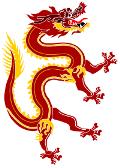
A Chinese dragon
Legend of the New Year
The legend of the Chinese New Year began in a small village many thousands of years ago. Each winter a monster named Nian would enter the village and attack the people. The villagers were scared and didn't know what to do. Then one year a wise old man figured out a plan. The next time Nian appeared the people used fireworks and drums to make a lot of noise. These noises scared off the monster and it fled into the hills.
The people of the village celebrated the day that they freed themselves from the monster. Each year they would light fireworks and celebrate their victory. This day became the start of the Spring Festival and the Chinese New Year.
Interesting Facts about Chinese Mythology
- Only the emperor could wear clothes that had pictures of the dragon.
- Nian was said to have the body of a bull and the head of a lion.
- Sometimes the Yellow Emperor was considered one of the Three Sovereigns.
- The Three Sovereigns are also known as the Three August Ones.
- Some records show that the Three Sovereigns each ruled for over 10,000 years.
- It was the Yellow Emperor's wife, Leizu, who taught the Chinese how to make silk from silkworms.
- Emperor Yao was said to have been morally perfect and served as the example of how all future Chinese emperors should behave.
For more information on the civilization of Ancient China:
http://www.ducksters.com/history/china/chinese_mythology.php
READ SOME CHINESE MYTHS HERE:
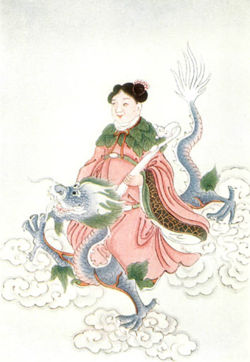
Revenge on the East Sea
Long ago, Emperor Yan had a daughter called Nyuwa. She was beautiful, lovely and had a strong will. She was fond of swimming and often went to the East Sea, playing with the blue waves, enjoying the pleasure of being close to Nature.
But one day while swimming, she was drowned. Her soul would not give
in, though, and broke through the water and became a Jinwei bird, with
white-black spots on her head, a grey beak and red claws. She lost no
time in seeking vengeance. Every day she picked up pebbles and sticks
from the Western Mountains and dropped them into the East Sea. She was
determined to fill up the sea to revenge herself, to make it no longer
capable of drowning others.
Rain or shine, she never rested; summer or winter, she kept on working. Even now, she is still busying herself with her task.
Two mountains
A man was nearly ninety years old. He lived in a place facing two big mountains, the Taihang and the Wangwu. Each mountain was thousands of meters, and covered hundreds of square miles.
To travel around the mountains was troublesome for the old man, so one
day he summoned his whole family and said to them, "How about removing
these two mountains so that we have a straight road to Yuzhou?"
"Good idea!" The family shouted and agreed. Already next day the
project went on its way. The old man's neighbour was a widow who had a
son of about seven. They both came to the old man's aid, of their own
will, speeding up the task.
Near the Huanghe River there lived another old man. When he heard about
this, he felt it very stupid, and decided to go and make the other old
man wiser. He said to him,
"How long do you think you can live on, so that you can remove these
big mountains? Rest your old bones, rather, and be ready to go
peacefully to heaven!"
The other looked at him, shook his head sadly, and sighed, "They say
you are wise, but in my view even a donkey is wiser. It is true that I
am on the edge of the grave. But I have sons; and my sons have their
sons, and grandsons again. And the mountains are eroding. So why cannot
we remove them in the end?"
The mountain deity, hearing this, felt greatly worried and depressed.
Moved by the old man's resolve he will, he then carried away the two big
mountains and made the old man's dreams come true.
Out fishing
The last king of the Shang dynasty was a tyrant. Jiang Shang, one of his ministers, saw that the ruler stopped at no evil, and managed to escape from his office, and settled in a secluded place near the Wei River, in an area that was dominated by Duke Jichang, and the duke was eager to attract talented people in his service.
The escaped Jiang Shang used to sit at the Wei River, fishing with a
straight hook, and with no bait on it. He stretched his pole, let his
"hook" remain a meter away from the surface of the water, and sang,
"Those that are tired of living on those that are seeking their death,
come up".
Talks about his queer way of fishing soon reached the duke's ear, and
he sent some soldiers for him. Jiang, seeing the soldiers approaching,
turned his back on them and said, "What a bad luck, tiny shrimps jumping
instead of a fish!"
The soldiers' report resulted in an official being sent, and again
Jiang overlooked him, saying, "What a pity, only a small fish appears,
and I fail to catch the big one!"
Next the Duke came. He brought with him some precious gifts, and this
time Jiang agreed to assist him. Jiang was made the duke's adviser, and
later promoted to be prime minister. Under his wise leadership, the
state grew stronger and stronger.
Some years later, Jiang assisted the descendents of the duke in sending
an expedition against the king of the Shang dynasty. They defeated him
and thus founded the Zhou dynasty.
Robber Chih (On Right and Wrong)
Right and wrong in the eyes of kings and great robbers hardly differs at times.Chuang said:
Robber Chih seized the wives of others and had strength to fend off any enemy and
curse people in the vilest language. People all lived in dread of him. One day Confucius
(Kung Fu) went up to his camp and wanted to reform him. Robber Chih flew into a great rage
of it. His hair stood on end and bristled. He said,
"Crafly hypocrite, you make up your stories, babbling absurd eulogies of kings.
You pour out fallacious theories. By clacking your tongue you seem to invent "right" or
"wrong", and leading astray rulers - setting up ideal of "filial piety", and hoping to
worm your way into favour with the rich and eminent. You'd better run home. If you don't
I'll take your liver."
His voice sounded like the roar of huge tiger with glaring eyes. However,
Confucius managed to talk to him, due to utter politeness to his face. He wanted the
bandit to stand up as a gentleman of true talent, he said. Robber Chih could then win
further fame in step with the already established set-up affairs of things. The bandit
declined,
"Those who can be swayed with offers of gain are mere idiots. Who are fond of
praising men to their faces are also fond of damning them behind their back.
I have heard that in ancient times the birds and beasts were many. The Yellow
Emperor [legendary ancestor of the Chinese] could not attain the primal virtue of older
days. He fought instead, till blood flowed. Later it came about that the strong oppressed
the weak, the many abused the few. You come cultivating the way of kings, speaking your
deceits, leading astray, hoping thereby to lay your hands on wealth with your honeyed
words. How can this "way" of yours be worth anything? Even the Yellow Emperor could not
preserve his virtue. A close look into emperors and men of worldy gains and esteem shows
that all of them for the sake of gain brought confusion to the Truth - forcibly turned
against their true form. They deserve the greatest shame!" said Robber Chih. [Co 323-31, extracts]
❖ The clever man is well on guard against all sorts of disintegrating forces. He
senses danger before it's too late.
He who knows he is a fool is not the biggest fool
Chuang Tzu once said:
"Call a man a sycophant and he flushes with anger; call him a flatterer and he
turns crimson with rage . . . See him set forth his analogies and polish his fine phrases
to draw a crowd, until the beginning and end, the root and branches of his argument no
longer match! See him spread out his robes, display his bright colours . . . in hopes of
currying favour with the age - he doesn't recognise himself as a sycophant or a flatterer.
See him with his followers laying down the law on right and wrong - and yet he does not
recognise himself as one of the mob. This is the height of foolishness!
He who knows he is a fool is not the biggest fool; he who knows he is confused
is not in the worst confusion.
The man in the worst confusion will end his life without ever getting straightened
out; the biggest fool will end his life without ever seeing the light. If three men are
travelling along and one is confused, they will still get where they are going - because
confusion is in the minority. But if two of them are confused, then they can walk until
they are exhausted and never get anywhere - because confusion is in the majority. And with
all the confusion in the world these days, no matter how often I point the way, it does no
good. Sad, is it not? . . .
Lofty words make no impression on the minds of the mob. Superior words gain no
hearing . . . With all the confusion in the world these days, no matter how often I
point the way, what good does it do?" said Chuang. [Co 139-40, extracts
taken from : http://oaks.nvg.org/chinese4-6.html#jinwei
Robinson Crusoe 1997 Part 1
watch the film ROBINSON CRUSOE with english subtitles .this is part 1 .when it's finished press the image of part 2 and so on.
Τρίτη 26 Φεβρουαρίου 2013
13 BOOK Expressions in English
What does it mean to be in someone's good books? Have you ever been called a bookworm? In this English lesson, you will learn 13 common expressions that have the word 'book' in them. I'll teach you how to use hit the books, don't judge a book by its cover, by the books, to have the book thrown at someone, the oldest trick in the book, and many more. Take the quiz on this lesson here: http://www.engvid.com/13-book-express...
English Language Learning Tips #1 - YouTube
English Language Learning Tips #1 - YouTube
First in a series of cute animations from University of Cambridge ESOL Examinations. The series provides tips for people learning English, starting with this fun 'test your English' episode.
First in a series of cute animations from University of Cambridge ESOL Examinations. The series provides tips for people learning English, starting with this fun 'test your English' episode.
FUTURE TENSE
Will and would.
We use will:
to talk about the future – to say what we believe will happen
to talk about what people want to do or are willing to do
to make promises and offers
would is the past tense form of will. Because it is a past tense it is used:
to talk about the past.
to talk about hypotheses – things that are imagined rather than true.
for politeness.
Beliefs
We use will
to say what we believe will happen in the future:
We'll be late.
We will have to take the train.
We use would as the past tense of will:
to say what we believed would happen:
I thought I would be late …… so I would have to take the train.
Offers and promises
We use I will or We will to make offers and promises:
I’ll give you a lift home after the party.
We will come and see you next week.
Willingness
to talk about what people want to do or are willing to do:
We’ll see you tomorrow.
Perhaps dad will lend me the car.
We use would as the past tense of will:
to talk about what people wanted to do or were willing to do:
We had a terrible night. The baby wouldn’t go to sleep. He kept waking up and crying.
Dad wouldn’t lend me the car, so we had to take the train.
to talk about something that we did often in the past because we wanted to do it:
When they were children they used to spend their holidays at their
grandmother’s at the seaside. They would get up early every morning and
they’d have a quick breakfast then they would run across the road to the
beach.
Conditionals
We use will in conditionals with if and unless to say what we think will happen in the future or present:
I’ll give her a call if I can find her number.
You won’t get in unless you have a ticket.
We use would to talk about hypotheses, about something which is possible but not real:
to talk about the result or effect of a possible situation:
It would be very expensive to stay in a hotel.
in conditionals with words like if and what if. In these sentences the main verb is usually in the past tense:
I would give her a call if I could find her number.
If I had the money I'd buy a new car.
You would lose weight if you took more exercise.
If he got a new job he would probably make more money.
What if he lost his job. What would happen then?
We use conditionals to give advice:
Dan will help you if you ask him.
Past tenses are more polite:
Dan would help you if you asked him.
Phrases with would:
would you…, would you mind (not) -ing, for requests:
Would you carry this for me please?
Would you mind carrying this?
Would you mind not telling him that?
would you like ...; would you like to ..., for offers and invitations:
Would you like to come round to morrow?
Would you like another drink?
I would like …; I’d like … (you)(to) ..., to say what we want or what we want to do:
I’d like that one please.
I’d like to go home now.
I’d rather… (I would rather) to say what we prefer:
I’d rather have that one.
I’d rather go home now.
I would think, I would imagine, I'd guess, to give an opinion when we are not sure or when we want to be polite:
It’s very difficult I would imagine.
I would think that’s the right answer.
THINK TEEN 1 RECYCLING FACTS
Recycling Facts for Kids
Enjoy a wide range of
fun recycling facts for kids. Learn more about the recycling process so
you know what’s happening next time you leave out your old plastic
bottles and aluminum cans to be picked up by curbside recyclers.
|
- Reduce, Reuse, Recycle.
A wide variety of different materials can be recycled, including paper, plastic, glass, metal, textiles and electronic equipment.
The idea of recycling
isn’t something new, historical evidence shows that humans have been
recycling various materials for thousands of years.
There are different
methods of waste collection. These include drop off centers (where
waste materials are dropped off at a specified location), buy back
centers (where certain materials are exchanged for money), and curbside
collection (where recycling vehicles are used to pick up waste
material intended for recycling along residential streets).
Powerful magnets are used to sort through different types of metals.
Recycled paper can be
made from three different types of paper; mill broke (paper scrap and
trimmings), pre-consumer waste (paper that was discarded before
consumer use), and post-consumer waste (paper discarded after consumer
use, such as old newspapers).
Recycling plastic can be
more difficult than other materials and plastics are not typically
recycled into the same type of plastic.
Different types of
plastics are labeled by numbers (plastic identification code), for
example polyethylene (PET) is number 1 and polyvinyl chloride (PVC) is
number 3.
Recycling old aluminum uses only 5% of the energy used to make new aluminum.
Aluminum can be recycled from cans, bicycles, computers, cookware, wires, cars, planes and other sources.
Glass recycling is often separated into colors because glass keeps its color after recycling.
For every ton of
recycled glass turned into new products, 315 kilograms of extra carbon
dioxide that would have been released during the creation of new glass
are saved.
WORD OF THE DAY - LONG -
Thesaurus-Synonyms LONG
'long' adjective
1 lasting for a considerable time: a long holiday.* μακροχρόνιος, παρατεταμένος
[extended] lasting for a longer time than usual: I’m taking an extended break from work. * παρατεταμένος, εκτεταμένος
[interminable] lasting so long that it seems it will never end and becomes boring: an interminable rant about the government.
* ατέρμων, ατελεύτητος, που μοιάζει ατέλειωτος
[lengthy] lasting for a long time, often an inconveniently long time: a
lengthy wait at the bus stop. * σχοινοτενής, εκτενής, μακροσκελής,
συνήθως για ασύμφορα μεγάλο χρονικό διάστημα
[lingering] which
does not finish quickly but continues slowly for a long time: a long
lingering death. * παρατεταμένος, που χρονίζει
[prolonged] lasting longer than planned or expected: a prolonged visit. * παρατεταμένος χρονικά, πέραν του σχεδιασμού
[protracted] proceeding slowly and taking a long time, often an
inconveniently long time: protracted negotiations. * που προχωράει αργά
και διαρκεί άβολα μεγάλο χρονικό διάστημα
[sustained] made to
continue for a long time: a sustained silence. * (για ενέργειες,
καταστάσεις κτλ.) που παρατείνεται σε διάρκεια, που συνεχίζει για πολύ
χρόνο, έμμονος
[time-consuming] which takes up a lot of your time: Washing clothes by hand is very time-consuming. * χρονοβόρος
2 extending for a considerable distance, or for a specified distance:
It’s a long way from here to London. * μεγάλου μήκους, μακρύς
[extensive] extending for a considerable distance and over a wide area: a
house with extensive grounds. * μεγάλης έκτασης, εκτεταμένος, ευρύς,
πλατύς
[in length] extending for the specified distance: three metres in length. * που εκτείνεται σε συγκεκριμένο μήκος ή μάκρος
[lengthy] (more often used to describe objects than distances) quite
long: You’ll need a lengthy piece of rope to reach to the bottom of the
well. * (για αντικείμενα) μακρός, μακρύς
taken from the BETSIS ELT DICTIONARY & THESAURUS
Κυριακή 24 Φεβρουαρίου 2013
Εγγραφή σε:
Αναρτήσεις (Atom)














